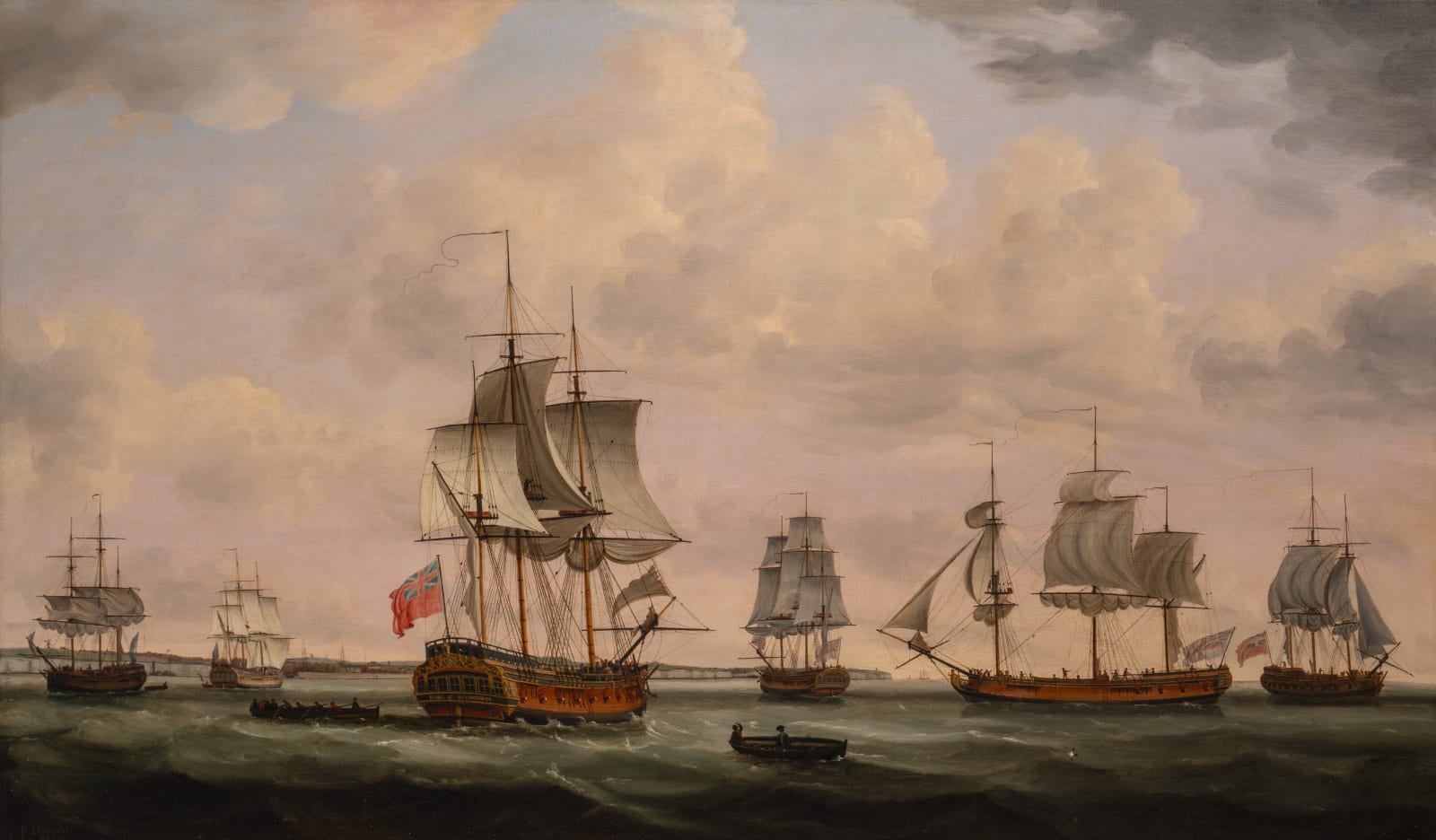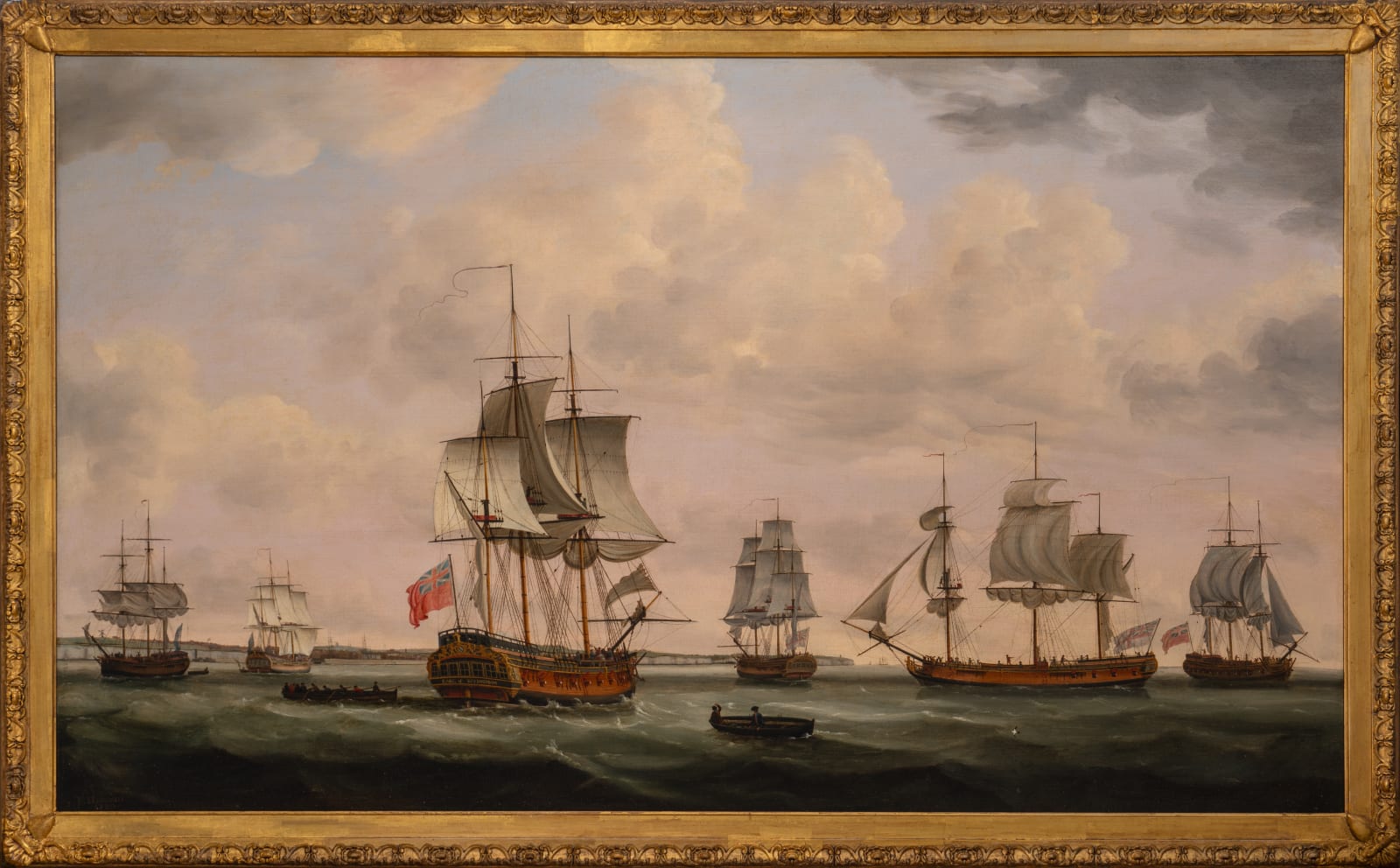Francis Holman 1729-1790
38½ x 62¾ in. (98 x 159.3 cm) framed
The Earl of Effingham, 346 tons, was built at Rochester, on the Medway, for Curlings of London in 1782. Intended for the highly lucrative Jamaica trade, she joined the ranks of the so-called ‘West Indiamen’ with the high hopes of her owners, who undoubtedly commissioned this painting to mark her completion and entry into service on the Caribbean route which brought huge quantities of expensive sugar, molasses and rum back to England.
In 1790 however, her owners decided to expand their activities into a less salubrious aspect of the West Indian trade, namely the transportation of slaves needed to work the plantations from which all the wealth of sugar emanated. Her first voyage was under Captain Thomas Willoughby, when she sailed from London on 9th November 1790, bound for Cape Coast Castle [in present day Ghana] where she arrived on 8th January 1791. Over the next month, she loaded 280 slaves before sailing for Jamaica where she arrived on 8th May after a passage lasting 88 days. Detailed information on this final phase of Earl of Effingham’s career is sparse but three slaving voyages are definitely recorded before the ship herself disappears from record.
Interestingly, the Beckford, 300 tons and built in 1773, one of the other merchantman in the convoy depicted in this painting, was also connected to the infamous slave trade later in her career.
Writing in his book Dictionary of Sea Painters, E.H.H. Archibald, former Curator of Paintings at the National Maritime Museum, describes Francis Holman as “…one of the major marine painters of the 18th century”. Little is known about his background and career; it has been suggested that the family were of Cornish origin but Holman was born in 1729 in Ramsgate on the Kent coast. His father, also Francis, was a master mariner and his younger brother John became a captain and continued in the family marine business.
His artistic training is not recorded but the family’s strong ties in the maritime world undoubtedly provided him with a knowledge and understanding of everything associated with shipping, as well as useful connections. His earliest known works are ship portraits which would likely have been commissioned by ships’ captains and owners. From 1768 he lived at several addresses in the Shadwell area of east London, close to Wapping and Blackwall Docks which were frequent subjects. His 1784 painting A view of Blackwall Yard from the Thames made £110,000 (hammer) at Christie’s on 7th December 2018, lot 246. He also painted naval engagements, particularly actions from the American War of Independence. Holman exhibited at Free Society of Artists between 1767 and 1772 and Royal Academy between 1774 and 1784.
Holman’s works often display a low horizon, recognising the strong influence of the Dutch sea painters such as Willem van de Velde the Younger (1633-1707). He was highly skilled at capturing ships in great detail whilst sensitive to observing light, atmosphere and the movement of sea. Today his works are considered valuable historical records of maritime life in the eighteenth century. He is also noted as being the teacher of Thomas Luny (1759-1837) who became a famous maritime artist of the Napoleonic period.
Examples by Holman are held in the following major institutions and collections: National Maritime Museum, Tate Britain, The Fitzwilliam Museum, Ferens Art Gallery in Hull, Government Art Collection, Yale Center for British Art, Peabody Museum in Salem and Library of New South Wales in Sydney.



